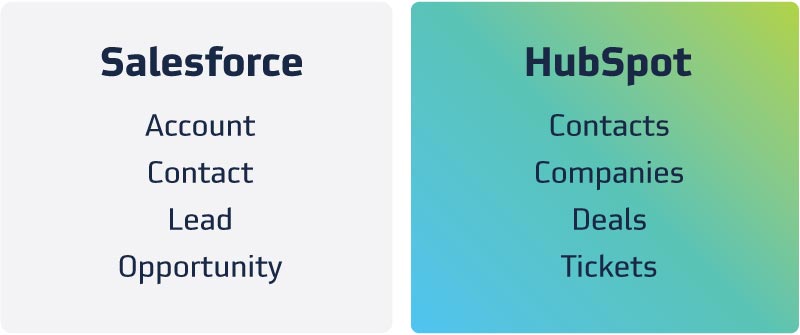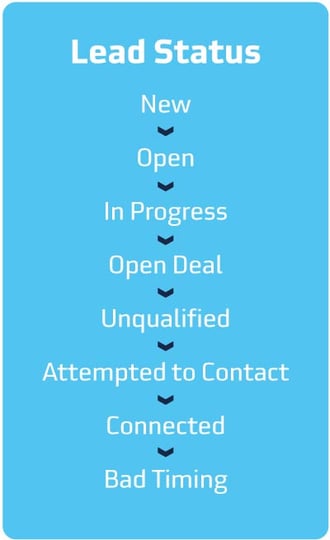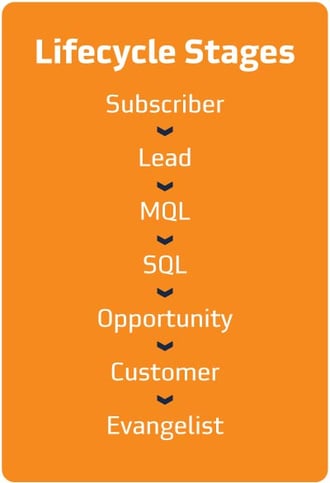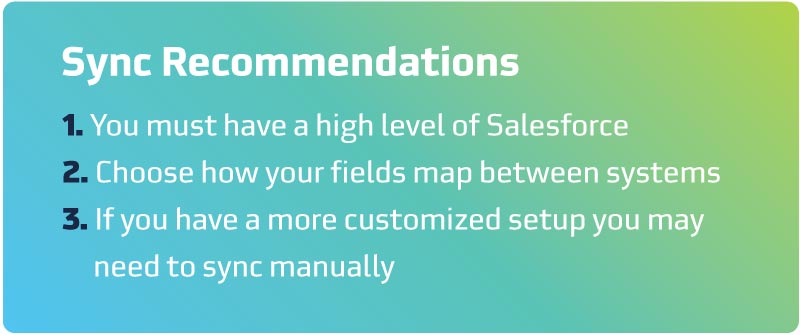What To Know Before Changing From Salesforce To HubSpot CRM
 Krista
|
Krista
|

Understanding key differences and subtle nuances in HubSpot vs Salesforce will help your CRM switch go smoother.
You've decided to make the switch from Salesforce to HubSpot. Congratulations! You and your team are on your way to a more efficient sales process.
At TANK New Media, we've worked with quite a few companies over the years that made the switch from Salesforce to HubSpot for various reasons, including Salesforce being too big or confusing for their teams to use. We know you're looking to avoid or remove any friction in your process, so here are a few things that would be helpful to understand about HubSpot as you make the switch.
How the HubSpot methodology will affect your data.
From the ground up, HubSpot was built around the idea of inbound marketing — understanding customers' problems and helping them find solutions. This directly impacts how the system functions.
For instance, HubSpot bases everything around contact records, not the account or company records. While it affects the business, they understand that a person is experiencing a problem and making an inquiry. It's the person who you're helping.
You see this in how the data syncs from the contact record to company record, not the other way. For instance, if you change the lifecycle stage on the contact record, you can set the system automatically to sync it to the company then to the rest of its contacts if you choose. Also, the lead status should be kept on the contact record instead of on the company record by default.
While these nuances between the systems may seem small, it changes the way you interact with your data from collection to lead assignment to closing a deal. For your team to have a successful switch, they should understand the difference.
Objects
Salesforce has different "objects" than HubSpot does. You may be asking yourself, what is an object? A CRM object represents the different types of relationships and processes your business has. In HubSpot, the standard CRM objects include contacts, companies, deals, and tickets. Salesforce default objects are account, contact, lead, and opportunity. If you are moving data from one to the other, it's important to know how these work and what should map where.

Contact objects are similar in both systems. A contact record is where the systems store an individual's demographic information, such as phone numbers and email addresses, and is linked to accounts or companies.
Companies and accounts are similar in both systems. This is where the company information lives and is connected to the corresponding contact records.
Opportunity and Deals
While these two object types are described a little differently, they are similar in how they act. They are an ongoing transaction that a sales team is pursuing with a contact or company. They can also connect the transaction to products that are kept in the system.
Leads
Leads do not exist the same in both systems. In Salesforce, this is an object. A lead may be how the person first enters into the Salesforce system. This person may then convert into a contact, account, and optionally an opportunity. In HubSpot, all people come in as contacts, and you use lifecycle stages and lead status to manage where they are in the sales process. When you map your data, be sure you're putting them in the right places.


Tickets
This only exists in HubSpot unless you have expanded your Salesforce level. We often don't set this up in the sales process but look at it during post-sale evaluation. For instance, it can be useful when onboarding or moving an order through production or customer service. On initial import, you probably won't need to worry too much about this object.
Sync
HubSpot has a native sync with Salesforce that can be helpful when you are making a move. There are a couple of things to be aware of here. First, you must have a high level of Salesforce for the sync to work. You must have a Salesforce edition with API access or Salesforce Professional for the sync to work. Second, once your sync is connected, you will be able to choose how your fields map and forth between systems. This works great until there is an error like a system mismatch. This will stop the sync with that object until it gets fixed. Usually, it’s a simple matter of finding the problem with the system and correcting it, but someone will want to stay on top of that while your information is syncing. Last, if you have a more customized setup, the sync may not work for you. You will not have a large set of customizable options; you'll only have system presets.

Need help setting up HubSpot CRM?
As mentioned above, switching from Salesforce to HubSpot is exciting. HubSpot is a user-friendly CRM that does not intimidate sales teams. Once your data is moved over, you will have your team up and running on the system in no time. If you would like to discuss your Salesforce to HubSpot move with one of our experts, please connect with us. We would love to help. Set up a free, no-obligation HubSpot consultation with our team today.
Subscribe to Our Blog
Stay up to date with the latest marketing, sales, and service tips.
